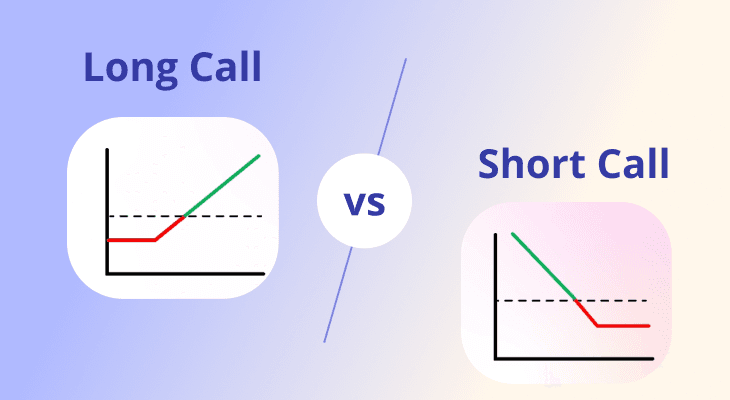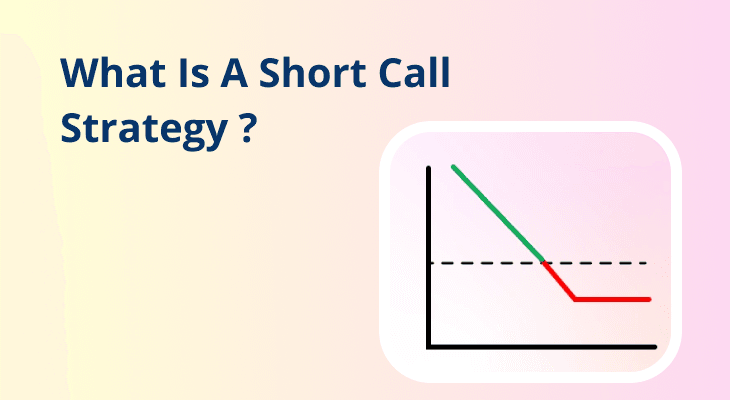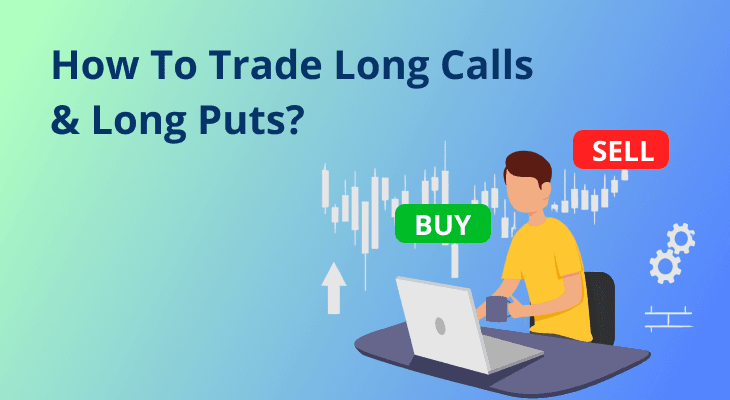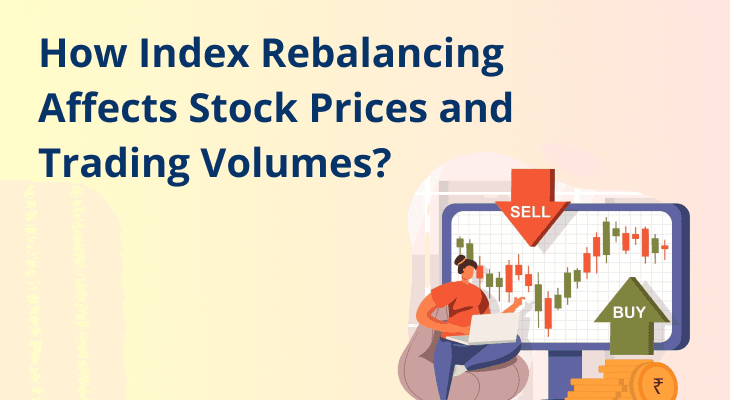
Long Call VS Short Call: Key Difference
Options trading may appear complex to beginners, but it comes down to understanding basic strategies like long call and short call positions. These are two sides of the same coin but serve very different trading purposes. While a long call represents a bullish outlook, a short call is generally used when the market is expected to fall or stay neutral. In this article, we will walk you through what each of these strategies means, how they work, and when to consider using them.
What Is A Long Call Option?
A long call is a bullish options strategy where the trader buys a call option, expecting the underlying asset to rise in price before the option's expiration. It gives the buyer the right (but not the obligation) to buy the underlying asset at a predetermined price, called the strike price, before the expiry date.
Key Characteristics Of A Long Call Option:
- Market View: Bullish. You expect the stock to go up.
- Premium Paid: You pay a premium upfront to buy the call option.
- Maximum Loss: Limited to the premium paid.
- Maximum Profit: Unlimited profit potential if the stock keeps rising.
Features:
- Leverage: A long call provides exposure to the underlying stock without owning it.
- Defined Risk: Your maximum loss is limited to the premium paid.
- Unlimited Upside: If the stock rises sharply, your gains can be significant.
Pros:
- Lower capital requirement than buying the actual stock.
- Ideal for taking directional bets on upside movement.
- Loss is limited and known in advance.
Cons:
- The option can expire without any real value if the stock doesn’t rise enough.
- You need to be right about both direction and timing.
- Premium paid can be lost in full if the market doesn’t move as expected.
Example:
Suppose a stock is trading at ₹100, and you buy a call option with a strike price of ₹110 for ₹5 (premium). If the stock moves to ₹125, your profit is ₹10 (₹125 – ₹110 – ₹5). If it stays below ₹110, your entire ₹5 premium is lost.
What Is A Short Call Option?
A short call is a bearish or neutral strategy where the trader sells a call option, expecting the underlying asset not to rise above the strike price before expiry. The seller receives a premium, but also takes on a potentially unlimited risk if the price shoots up.
Key Characteristics Of A Short Call Option:
- Market View: Neutral to bearish. You expect the stock to remain flat or decline.
- Premium Received: You earn a premium when selling the call.
- Maximum Profit: Limited to the premium received.
- Maximum Loss: Unlimited if the stock rises significantly.
Features:
- Income Strategy: Often used to generate regular income in sideways markets.
- Time Decay Advantage: Value erodes over time, benefiting the seller.
- High Risk: If the stock rises sharply, losses can be very large.
Pros:
- Generates income from the premium collected.
- Ideal for markets expected to remain flat or move slightly down.
- Time decay works in the seller’s favour.
Cons:
- Unlimited loss potential if the stock rallies sharply.
- Requires margin and a high-risk appetite.
- Must be monitored closely, especially in volatile markets.
Example:
You sell a call option on a stock at a strike price of ₹110 for ₹5 when the stock is at ₹100. If the stock remains below ₹110, you keep the ₹5 premium. If the stock goes to ₹125, your loss is ₹10 (₹125 – ₹110 – ₹5), and it can be higher if the price rises further.
Long Call vs Short Call – Key Differences
While both strategies involve call options, their intent, risk-reward profile, and market outlook are completely different. Here's a detailed comparison to make the distinction clear.
Explanatory Comparison In Paragraph Format:
- Market Outlook: A long call is used when you expect the stock price to go up. A short call is used when you believe the stock will stay flat or fall slightly.
- Premium: In a long call, the trader pays a premium to buy the option. In a short call, the trader receives a premium for selling it.
- Profit Potential: The long call offers unlimited upside if the stock keeps rising. In contrast, the short call has limited profit, equal to the premium received.
- Loss Potential: The long call has limited loss, which is the premium paid. The short call has unlimited loss potential if the market rises steeply.
- Capital Requirement: A long call requires only the premium amount, making it accessible. A short call typically requires higher capital or margin due to higher risk.
- Time Decay Impact: Time decay works against long call buyers, as the value of the option reduces with time. Short call sellers benefit from time decay as it erodes the option premium they sold.
Summary Table: Long Call vs Short Call
Factor | Long Call | Short Call |
|---|---|---|
Market View | Bullish | Bearish or Neutral |
Premium | Paid | Received |
Maximum Profit | Unlimited | Limited to Premium Received |
Maximum Loss | Limited to Premium Paid | Unlimited |
Time Decay Effect | Negative | Positive |
Capital Requirement | Lower | Higher (margin needed) |
Risk Appetite Needed | Moderate | High |
Which Strategy Should You Choose?
The right choice depends on your market view, risk appetite, and trading experience.
- Choose a long call if you're confident the stock will rise significantly. It's also a good strategy for beginners as the risk is capped at the premium paid.
- Go for a short call only if you are experienced and have a bearish or neutral view. Since the risk is unlimited, it's not ideal for beginners.
Use-Case Scenarios:
- Scenario 1: You believe a stock will rally after its earnings announcement – buy a long call.
- Scenario 2: The stock has rallied too much and you expect it to stay flat or decline – a short call could work, but with caution.
- Scenario 3: You want to generate income in a flat market – consider selling a call, but be ready with a risk management plan.
Important Tip: Short calls are best executed with a hedge (like owning the stock or another option position), which helps in limiting potential losses.
Conclusion
Understanding the difference between a long call and a short call is essential for anyone stepping into options trading. While the long call is ideal for bullish traders with limited capital, the short call suits experienced traders seeking to profit from range-bound or bearish markets. As always, selecting the right strategy requires a balance of market outlook, capital availability, and risk tolerance.
Additional Read: What Are Call and Put Options? How Do They Work?
Additional Read: A Beginner’s Guide to Option Strategies
FAQ
What is a long call option in trading?
A long call option is a bullish strategy where the trader buys a call option hoping the stock price will rise. It gives the buyer the right (but not the obligation) to purchase the stock at a fixed price before expiry. The maximum loss is the premium paid, while the profit potential is unlimited.
What is a short call option, and when is it used?
A short call option is a bearish or neutral strategy where the trader sells a call option, anticipating that the stock will stay flat or fall. The trader earns a premium upfront but risks unlimited losses if the stock rises above the strike price significantly. It’s typically used by advanced or hedged investors.
How does time decay affect long and short call options?
Time decay reduces the value of options as expiry nears. For long call buyers, this is unfavorable because their option loses value over time if the stock doesn't move. For short call sellers, time decay works in their favour, allowing them to retain more of the premium as the option nears expiry.
Which is riskier: a long call or a short call?
A short call is riskier than a long call. With a long call, the loss is limited to the premium paid. However, with a short call, the loss can be unlimited if the stock price rises sharply. Due to this, short calls are recommended only for experienced traders with risk control strategies.
Can beginners trade in long and short call options?
Beginners can start with long call options because the risk is defined and limited. Short call options carry high risk and require margin, making them more suitable for advanced traders. It’s advisable for new investors to fully understand the risks and test strategies in a simulator before trading with real capital.
How do I choose between a long call and a short call?
Choose a long call if you're bullish and want to profit from upward movement with limited risk. Opt for a short call if you believe the stock will stay flat or fall, and you're comfortable with higher risk. Your market view, capital, and risk appetite should guide the decision between the two.
What happens if the stock stays below the strike price in a long call?
If the stock remains below the strike price at expiry, the long call expires worthless. In this case, the trader loses the entire premium paid. No shares are bought or exercised, and there is no additional loss beyond the premium. That’s the maximum loss in a long call strategy.
Is there a way to reduce risk while selling a call option?
Yes, selling a covered call is a way to reduce risk. In this strategy, you own the underlying stock and sell a call option against it. If the stock rises, your gains from the stock offset the call losses. This is less risky than a naked short call but still requires careful planning.
Do I need margin to sell a short call option?
Yes, selling a short call typically requires a margin account and a substantial margin deposit. This is because of the unlimited loss potential if the stock price rises significantly. The broker will block funds or assets to cover potential losses, making it essential to understand margin requirements before selling calls.
Are long and short call strategies suitable for intraday trading?
Long calls can be used in intraday trades if you expect quick price movement. However, options lose value quickly due to time decay and low liquidity near expiry. Short calls are not ideal for intraday unless you're hedging or managing positions carefully. Both strategies require strong market analysis for intraday use.


